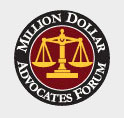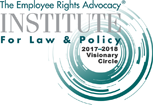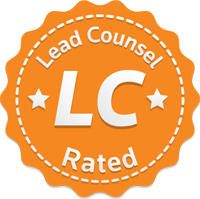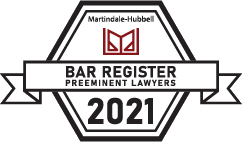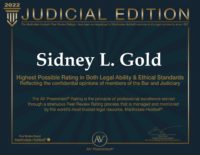What is Medical Credentialing?
July 29, 2020
Medical credentialing ensures that physicians practicing in certain areas have all the essential education, skills, and experience required to practice medicine efficiently and safely. It acts as a safeguard that protects patients and allows them to have more confidence and trust in their providers. This kind of oversight also benefits doctors and medical organizations. This is because credentialing is also needed for inclusion in health insurance plans, grants providers certain privileges, gives approval for performing certain procedures, and can act as a shield against potential lawsuits.
The medical credentialing process can be challenging, especially for physicians. Without it, though, problems like low satisfaction ratings and other quality issues can arise. It is a process that should be taken seriously by health care organizations and providers.
When Does the Credentialing Process Start?
All health care providers, including ancillary personnel and facilities, must be credentialed. This is not a one-time thing, either; recredentialing also takes place to make sure that providers are up-to-date with the standards needed to maintain consistent, quality care.
The basic components of medical credentialing and privileging are provider credentialing, enrolling with insurance plans, and getting privileges. Privileging is when providers are granted permission by hospitals or other health care facilities to provide certain diagnostic and therapeutic services.
The credentialing process is initiated when a health insurance company or health care facility formally requests information on a provider’s education, background, and licenses. Many medical organizations have sizable staffs on site that work to manage their medical credentialing. Smaller ones can offer assistance to their medical personnel to help them manage the process.
It is not uncommon for medical organizations to contract third-party companies or credentials verification organizations (CVO) to collect and verify the information from applicants. Electronic credentialing processes can make this work easier by increasing efficiency and taking the more tedious work out of the hands of the stakeholders. There are useful software programs available that offer complete transparency and reporting services for medical credentialing needs.
What is the First Phase of Credentialing?
The first phase consists of completing a detailed application. Applicants need to complete information about their educational background, training, licensure, work history, any malpractice history, and hospital privileges. Additional questions about Medicare and Medicaid sanction status and Drug Enforcement Agency (DEA) certification will also need to be answered. Finally, the provider has to include any other applicable credentialing documents and attest the capability of providing the functions of the duties. The attestations also serve to ensure that the applications forms are valid and accurate. It is essential to complete the application in full without omitting any information. If any information needs to be revised after submission, the attestation will also need to be rewritten and resubmitted.
Since states have their own credentialing laws, it is a good idea to be informed about them. This is especially important for providers who change their locations to different states. One good resource that can help with the application process is the Council for Affordable Quality Healthcare (CAQH).
Is Verification Required?
All states have certain regulations for health care credentialing, and the federal agencies that provide verification include the Joint Commission on Accreditation of Healthcare Organizations (JCAHO) and the federal Centers for Medicare & Medicaid Services (CMS). The CMS requires that providers be credentialed, if not, they cannot qualify for Medicare or Medicaid reimbursement.
The JCAHO will only accredit providers who follow its regulations. The majority of hospitals in this country pursue JCAHO accreditations, which are also needed for Medicare and Medicaid reimbursements. There are also other groups than supply additional accreditations, such as the National Committee for Quality Assurance (NCQA). The NCQA standards for education, licensure, and malpractice information are reportedly amongst the highest out there.
Additional sources for verification can include the National Student Clearing House and the National Practitioner Data Bank. The latter stores data about negative events, like license suspensions and medical malpractices claims.
What Happens After Verification?
Once the practitioner’s credentials are assessed and verified, the next phase begins. If the provider gets credentialed with an insurance company, the provider may then enter into a contract. Doing so allows the provider to bill and then be reimbursed as part of that insurance company’s provider network. Many providers participate with several insurance networks.
During this time, privileges may also be granted to practitioners. This allows them to provide care, treatment, and services requested by the medical organization for the patients at specified locations.
When Does Recredentialing Occur?
Recredentialing can take place during different periods. The NCQA standards dictate that it occurs every 36 months at a minimum, but this may vary. Basically, the provider will receive a communication that informs the provider that recredentialing must be completed. If the provider does not comply before the specified deadline, the provider’s credentials may be suspended.
Any information that may have changed or expired needs to be verified during recredentialing. Applicants should pay special attention to any expired licenses, board certifications, and anything pertaining to malpractice history. The recredentialing process helps to confirm that the provider maintains adherence to the credentialing standards.
There is also ongoing oversight by health care organizations who focus on monitoring medical provider’s work. One area of concentration is the evaluation of any reports of inappropriate care. This reporting is continually evaluated by health insurance companies and health care facilities and functions as a system of checks and balances.
What are the Guidelines?
Medical credentialing is serious business and understanding how it works helps to smooth things along. It is recommended to begin the application process early, it can take four months or longer to complete, depending on the market. New practitioners should keep this in mind and get started well in advance of their start dates at new practices. If the medical organization provides credentialing assistance, this can be very helpful.
Before starting the application, applicants should gather key information, including the following:
- List of insurance providers they would like to apply with and links to their online applications
- Taxpayer Identification Number
- National Provider Identifier-2
- Practice address and payment address
- W9 for the practice
- Instructions on applying for National Provider Identifier and CAQH numbers
Delays can happen during medical credentialing, so keeping track of progress is also a good idea. If there are any issues along the way, they should be addressed immediately, otherwise it could lead to loss of revenue. As a cautionary measure, new physicians should not be providing services unless their credentials have been confirmed. In some cases, medical staff members cannot start until all of their credentialing paperwork has been submitted.
Once the practitioner has obtained their medical credentials, the JCAHO instructs practices to verify their own requirements, like certifications and malpractice insurance. Other guidelines include getting written statements from licensed independent practitioners. These statements should cover specific topics, such as any health problems that could impact the ability to perform as needed, any challenges to licensure, and any professional liability actions that may have resulted in final judgments against the applicants.
Getting Support is Important
Medical organization leaders are also advised to assist their practitioners with getting their medical credentials. This can be done by becoming familiar with the process and by providing the right resources to complete the applications. These organizations can also develop methods to evaluate the scope of practice for every type of licensed independent practitioner who needs to get credentialed and privileged. Having the proper filing systems and storage capabilities to house all of the relevant data is another way to make it easier for providers to provide quality care.
If a medical practitioner is unsure of the process or needs questions addressed, it is also beneficial to speak to a lawyer about professionally licensing matters. A lawyer will determine any board certification and credentialing issues and identity the best course of action.
Philadelphia Physician Lawyers at Sidney L. Gold & Associates, P.C. Understand the Challenges of Medical Credentialing
Proper medical credentialing is an integral part of having a successful practice. Our Philadelphia physician lawyers at Sidney L. Gold & Associates, P.C. help physicians stay on track. For a free consultation, complete our online form or call us at 215-569-1999. Located in Philadelphia, we serve physicians throughout Wilkes-Barre, Scranton, northeast Philadelphia, Bucks County, Chester County, Delaware County, and Montgomery County.







